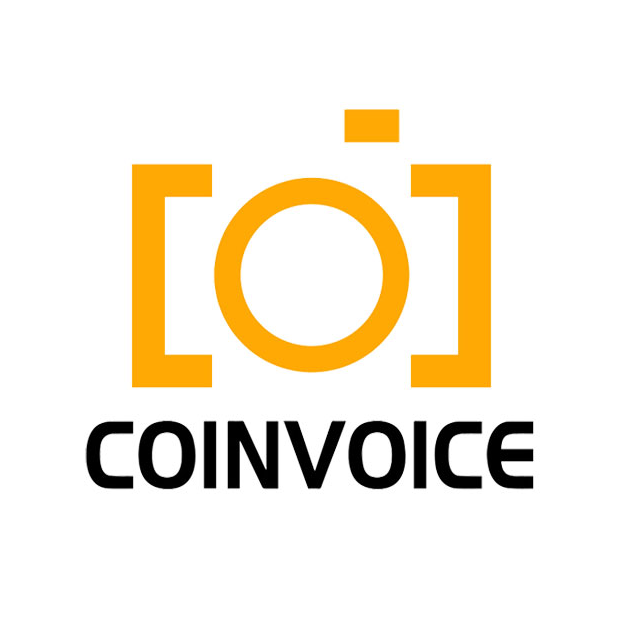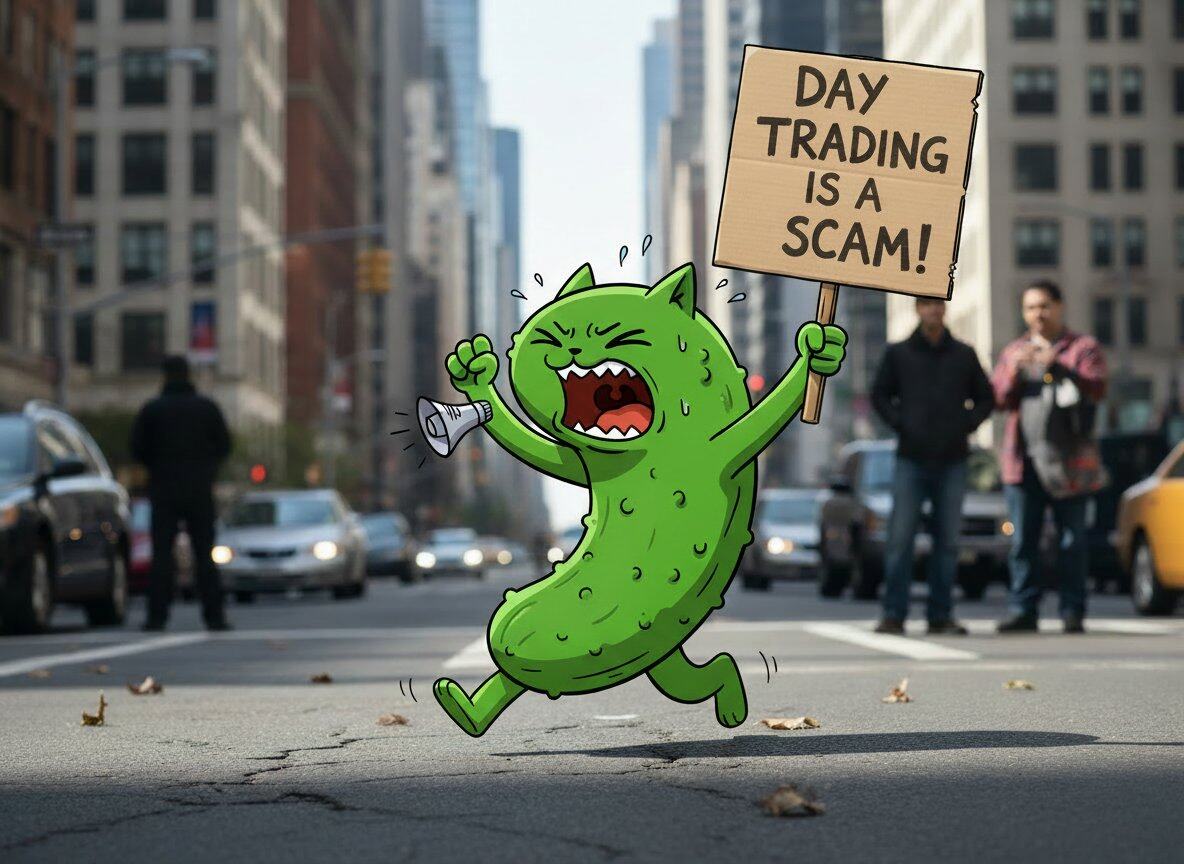The Tokenization Wave of US Stocks: Robinhood’s Breakout in On-chain Finance
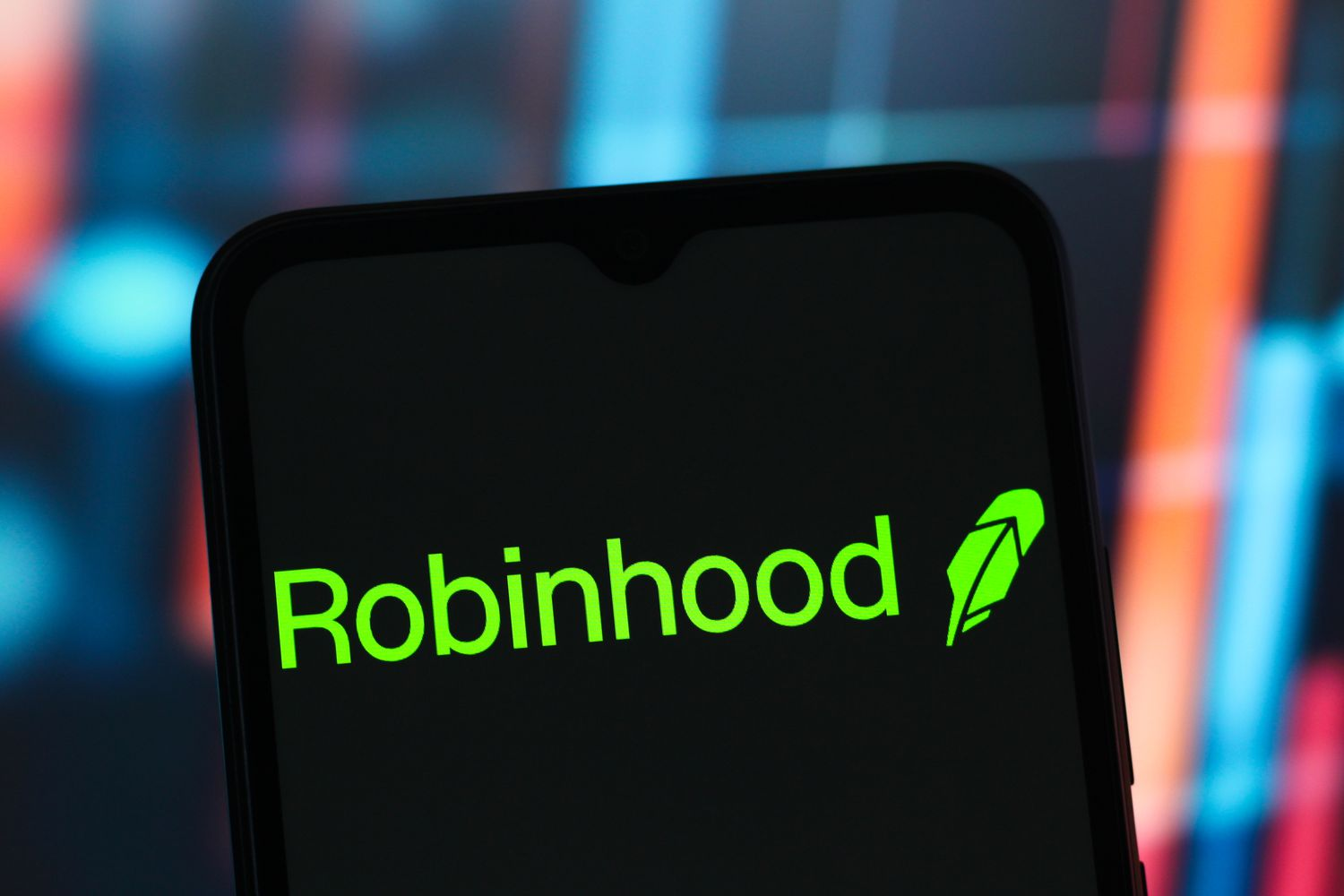
June 30, 2025, Cannes, France. In the center of the stage, Robinhood CEO Vlad Tenev announced a series of eye-catching new moves: Robinhood Chain built on Arbitrum, US stock tokenized trading, perpetual futures, ETH/SOL staking, private equity token subscription, and Rabbit Gold Card, which directly converts off-chain consumer cashback into crypto assets. The conference was called "To Catch a Token", but it really aimed at the lifeblood of the entire traditional financial system. After the news was announced, Robinhood's stock price rose by nearly 10%, and its market value exceeded US$76 billion. The crypto market and US stock investors were boiling at the same time.
From a "zero commission" disruptor to a chain financial reconstructor, Robinhood is embedding itself deep into the global financial architecture. This is no longer a path for a brokerage firm to advance, but a strategic change of track that runs through technology, products, regulation, and traffic entry. Against the backdrop of the Trump administration's push for the relaxation of crypto regulation in the United States and the rise of the global asset tokenization craze, Robinhood is trying to take the lead in running a complete set of "tokenized US stocks + private equity + native Layer 2" closed loops to establish a new order that supports 7 × 24 hours on-chain transactions and asset issuance.
This article will be divided into three parts. It will start with the growth trajectory of Robinhood and gradually analyze how this "new financial behemoth" has leveraged blockchain technology and compliance advantages to evolve from a "cheap and easy-to-use" brokerage firm to a core player in the wave of tokenized U.S. stocks.
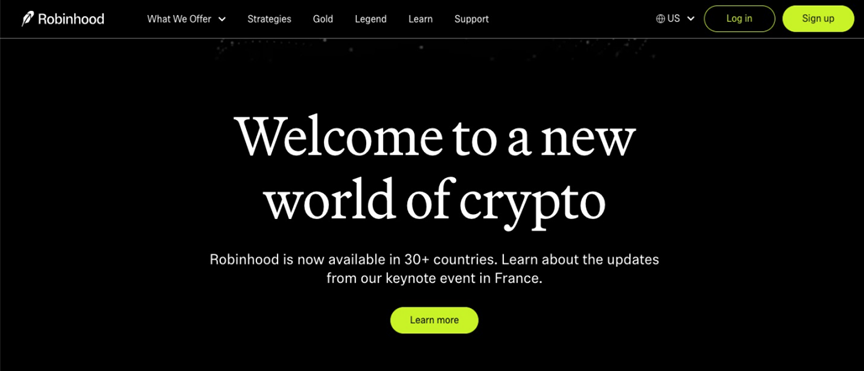
The rise of Robinhood: from zero-commission innovation to the beginning of the on-chain financial ecosystem
In 2013, two Stanford University graduate students, Vlad Tenev and Baiju Bhatt, inspired by the Occupy Wall Street movement, keenly perceived the structural injustice in the traditional financial system: institutional investors relied on technology and cost advantages to enjoy trading privileges, while ordinary retail investors were blocked by high commissions and complex barriers. With the ideal of "financial democratization", the two post-90s founders set out to create a radical product that accurately hit the user's pain points - Robinhood. In 2015, the app was officially launched and quickly became popular with its zero-commission, no-threshold securities trading services. In the early testing phase, it attracted more than 50,000 appointments, and the waiting list exceeded one million before the official release. By 2018, the number of registered users on the platform had reached 4 million, surpassing the 36-year-old traditional broker E*TRADE, announcing the arrival of the era of Internet securities platforms.
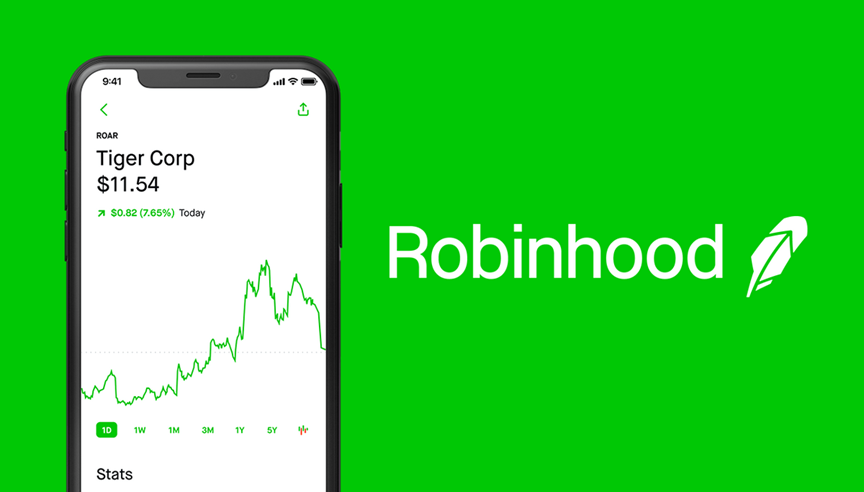
As the business model matures, Robinhood's corporate positioning has gradually upgraded from a "free securities platform" to a "new generation of financial portal." As of the first quarter of 2025, the platform had 25.8 million users with deposits, a quarterly year-on-year increase of more than 8%; total customer assets increased to US$221 billion, and the average user's managed assets reached US$8,566, a record high. This leap not only enhances Robinhood's asset carrying capacity, but also marks the transformation of the user structure from "early adopters" to "middle-class main force." What is particularly eye-catching is that the number of its paid members, Robinhood Gold, exceeded 3.2 million in Q1 2025, a year-on-year increase of 90%, fully demonstrating its penetration and asset stickiness among young users with medium and high net worth.
However, Robinhood's ambition is far more than "getting assets on the chain". It is trying to build a complete ecosystem for on-chain asset management, moving towards the one-stop platform positioning of "crypto version of Fidelity". As early as 2022, the outline of this strategy has taken shape. That year, Robinhood took the lead in launching the non-custodial wallet Robinhood Wallet, which supports users to freely deposit and withdraw BTC and ETH, and connects to mainstream DeFi protocols; in 2023, it further opened up on-chain asset withdrawals to break the barriers of centralized accounts; in 2024, it acquired Bitstamp, the oldest compliant exchange in Europe, for US$200 million, and won more than 50 financial licenses in the UK, EU, Singapore and other places in one fell swoop, and integrated its deep liquidity network and all-weather trading engine covering 5,000+ institutions. This transaction not only greatly shortens the compliance cycle, but also "packages and launches" Robinhood's institutional service capabilities and global compliance framework, opening up the last mile for its entry into on-chain finance.
From zero commissions to the layout of encryption, Robinhood has always been at the forefront of the industry, and these strategic changes have quickly brought real returns. The first quarter financial report of 2025 shows that the company's total revenue reached 583 million US dollars, of which the encryption business contributed as much as 252 million US dollars, accounting for 43%, surpassing options ($240 million) and stock trading ($184 million) for the first time, becoming the main source of income. Behind this is not only the rapid growth of new businesses such as tokenized stocks, but also a sign that Robinhood has initially mastered the three core capabilities of encryption trading entry, liquidity engine and financial service closed loop. As founder Tenev has repeatedly publicly emphasized: "Robinhood's ultimate mission is not to become a replica of Wall Street, but to build an on-chain financial underlying system that everyone can access."
Robinhood’s Migration: Ushering in a New Era of Tokenized U.S. Stocks and Global On-Chain Investment
On June 30, 2025, at the "To Catch a Token" conference held in Cannes, France, Robinhood officially pushed its encryption strategy to a climax and clarified its regional market layout and product system for the first time. The core strategy announced at the conference takes Europe as the outpost and revolves around "tokenized US stocks + perpetual contracts + All-in-One investment app". Technically, Robinhood announced that more than 200 US-listed stocks and ETFs have been tokenized and put on the chain through Arbitrum Layer 2, and users can conduct 24/5 real-time transactions in the app. The on-chain dividend and stock split synchronization mechanism is launched simultaneously to ensure that users have real rights and interests. By the end of the year, Robinhood plans to expand to thousands of targets, with the goal of creating the world's most liquid and lowest experience threshold on-chain securities market.
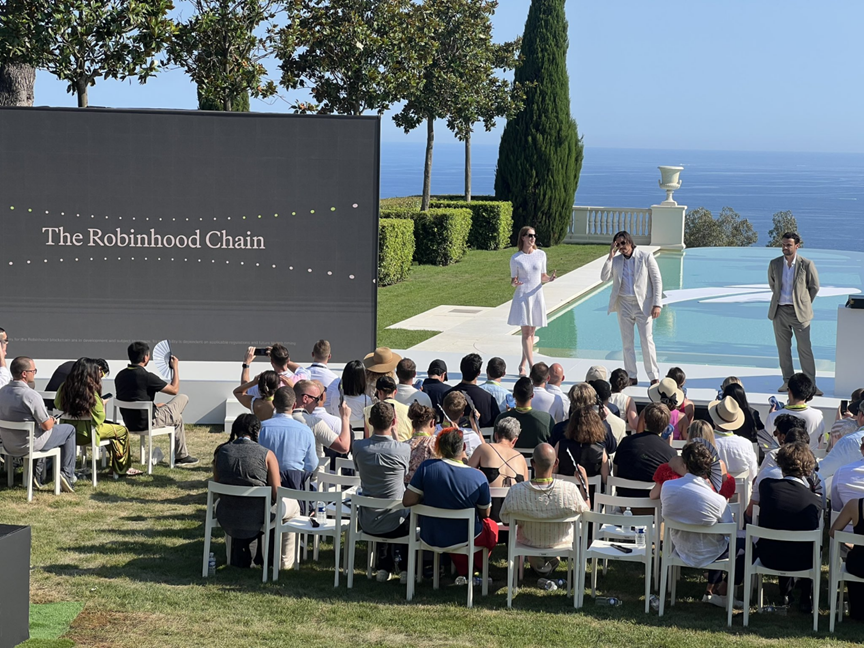
In line with this strategy, Robinhood has fully upgraded its original European app "Robinhood Crypto" to "Robinhood", officially establishing it as a one-stop comprehensive investment platform. In addition to the original cryptocurrency trading function, the platform will launch perpetual contract trading in the summer of 2025, with Bitstamp providing liquidity and clearing support. The mobile UI designed for European users is extremely simplified, and stop-profit, stop-loss, and leverage settings are all completed through sliders, which significantly reduces the learning cost of non-professional users and realizes the "popularization of on-chain derivatives" for the first time.
At the same time, Robinhood also opened up the subscription of private tokens of high-potential startups such as SpaceX and OpenAI. Eligible users can receive tokens in the application. These tokens will be issued in a 1:1 manner based on real equity, becoming the first path for ordinary users to directly participate in private equity in the form of digital assets. This breakthrough changed the market structure originally dominated by high-net-worth investors and institutions, and promoted the implementation of "private equity equality" in the context of encryption. In order to encourage participation, Robinhood also established an incentive mechanism of "2% deposit reward" in an attempt to maximize the value of activating the European market in the tokenization reform.
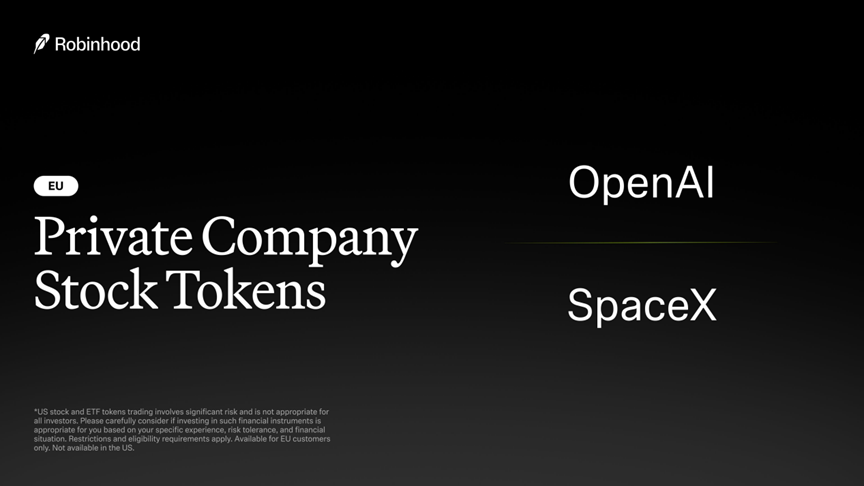
In addition to Europe, the US market, as the core position of Robinhood's user base, was also given the role of "advanced on-chain experience" in this conference. The first batch of products includes ETH and SOL staking services, which are fully open to the US market, exempt from the minimum amount limit, and provide a 2% deposit reward. Robinhood emphasizes that staking is not only a tool for obtaining returns, but also a part of users' participation in network co-construction. At the same time, Robinhood's AI investment assistant Cortex was also officially unveiled at the conference. The assistant will give priority to serving Robinhood Gold users, integrating on-chain data, token news, whale transactions and financial events, and generating personalized strategy recommendations and risk warnings.
Behind the entire technology stack, Robinhood's self-developed "Robinhood Chain" has become a key infrastructure. This Layer 2 public chain built on the Arbitrum technology stack is defined as the first RWA chain that natively serves real assets. Its three-stage advancement path has been clarified: in the first stage, Robinhood will complete the purchase of US stocks and 1: 1 token casting; in the second stage, Bitstamp will be included in the trading system to ensure that token assets still have liquidity during the traditional market closure period; in the third stage, the self-custody and cross-chain migration capabilities of assets will be fully opened to achieve true asset sovereignty. Robinhood said that the public chain will start testing at the end of the year and will be fully launched in 2026. By then, Robinhood will officially evolve from a traditional brokerage platform to a key access layer for the digitization of global real assets.
Robinhood’s breakthrough: Compliance risks and challenges of multi-dimensional competition
On the journey towards global tokenized finance, the primary challenge facing Robinhood is the complex and severe policy gap. The U.S. Securities and Exchange Commission (SEC) has not yet established a clear and specific legal framework for security tokens. Anna Lee, Chief Compliance Officer of Robinhood, has said frankly at multiple industry forums: "The compliance of tokenized U.S. stocks, especially at the intersection of traditional securities regulations and blockchain innovation scenarios, still has many uncertainties and regulatory risks." When promoting the tokenization of stocks, ETFs and private equity, Robinhood needs to find a balance between existing securities laws and emerging blockchain applications, circumventing regulatory red lines while promoting technological innovation. Although the U.S. House of Representatives passed the RWA Asset Registration and Compliance Exemption Act in 2024, the bill has not yet entered the Senate for a vote, and it is difficult to provide Robinhood with comprehensive legal protection in the short term.
European market regulation is relatively mature, but there are still challenges. Although the EU's Markets in Crypto-Assets Regulation (MiCA) sets a framework for crypto-asset regulation, the specific classification and compliance standards for tokenized securities are still being improved. Robinhood not only has to deal with regulatory differences between countries, but also has to deal with complex issues such as cross-border KYC/AML, investor suitability and tax reporting. Compliance costs are high and execution is complex. David Chen pointed out: "We operate in multiple jurisdictions around the world, and every detail must be strictly controlled. This is not only about compliance, but also the cornerstone of maintaining user trust."
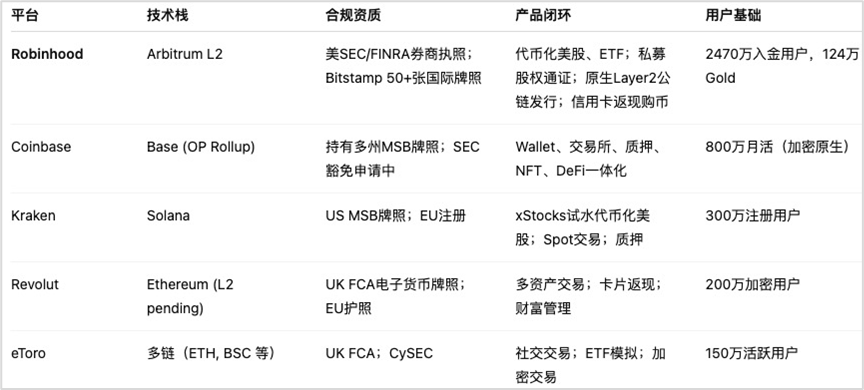
Competition in the industry is also becoming increasingly fierce. Coinbase has built a complete ecosystem with the help of Base Layer 2, integrating wallets, transactions, staking and DeFi protocols, and has a large crypto-native user group and an active developer community; Kraken's xStocks project has tested a small number of US stock tokens on the Solana chain. Although the liquidity is still shallow, it attracts high-frequency traders due to its extremely low latency; Revolut and eToro in the European market have deepened their roots through the "financial supermarket" and "social trading + ETF simulation" models, focusing on both crypto trading and investment education, and have become Robinhood's strong competitors in all-round investment services. Faced with multi-dimensional competition, Robinhood must not only maintain its leading position in technology, but also build insurmountable barriers through compliance and user experience.
Robinhood has currently built a triple core moat. First, as a licensed securities broker in the United States, Robinhood has legal securities issuance and trading qualifications, providing solid legal protection for tokenized securities. Secondly, the acquisition of Bitstamp has brought more than 50 international regulatory licenses and access to the liquidity resources of more than 5,000 institutional clients, ensuring that the token market can remain active and deep during the closure of traditional exchanges. Finally, Robinhood has tens of millions of monthly active users, especially among the younger generation of investors. The encrypted cashback function of the Rabbit Gold Card credit card has realized the seamless connection between off-chain consumption and on-chain asset management, creating a good user experience without feeling on-chain.
Despite facing multiple challenges such as unclear regulatory policies, intensified industry competition, and fragmented technology ecosystems, Robinhood is making every effort to build a global digital financial hub for "tokenized U.S. stocks" and diversified RWAs with its compliance qualifications, deep institutional liquidity network, and huge user ecosystem. As Anna Lee said, compliance and innovation are not opposites, but the twin engines that drive Robinhood forward. In the future, Robinhood hopes to achieve a "boundless on-chain financial experience" where users do not need to perceive the underlying complexity, truly making digital assets an everyday wealth tool for inclusive global investors.

